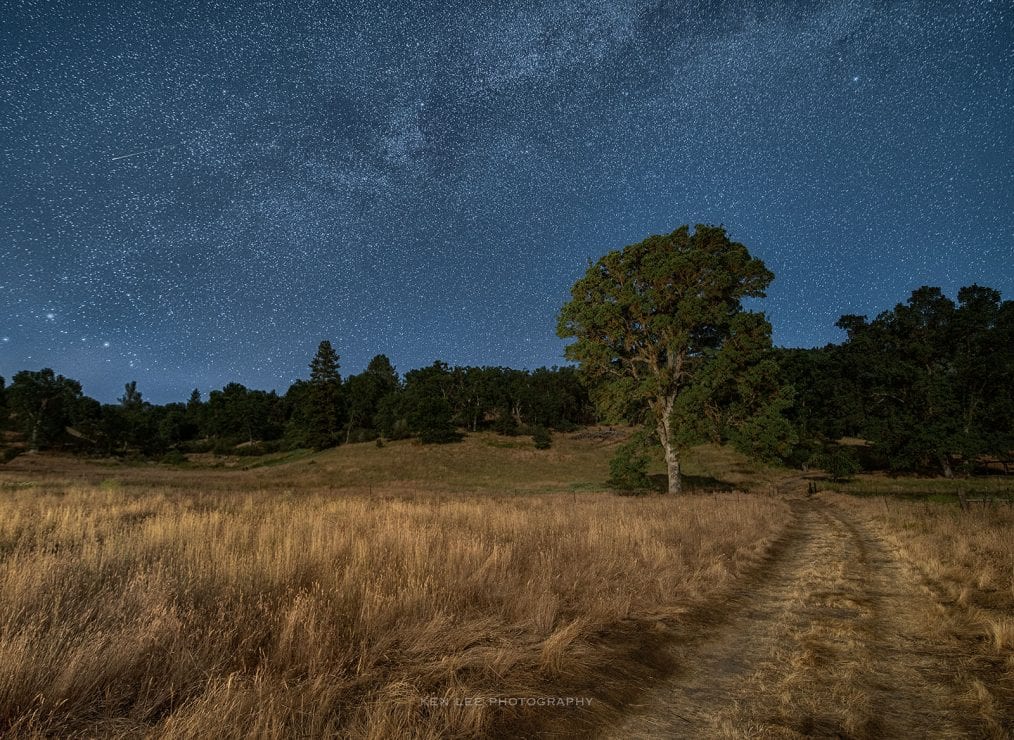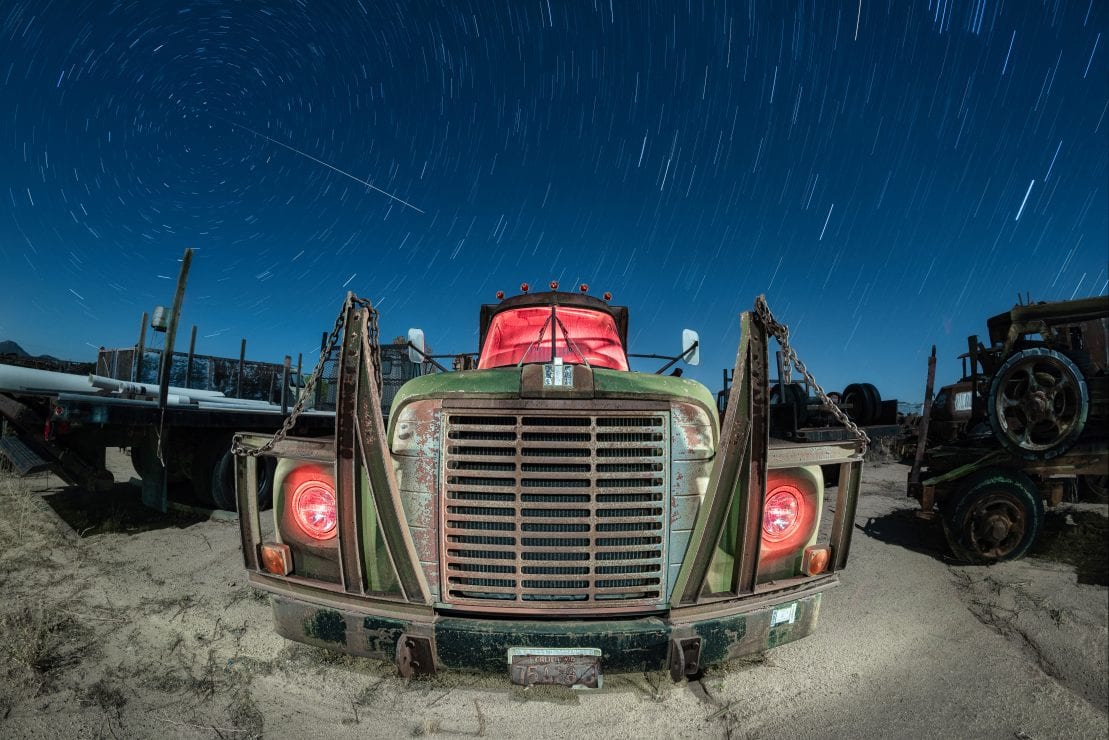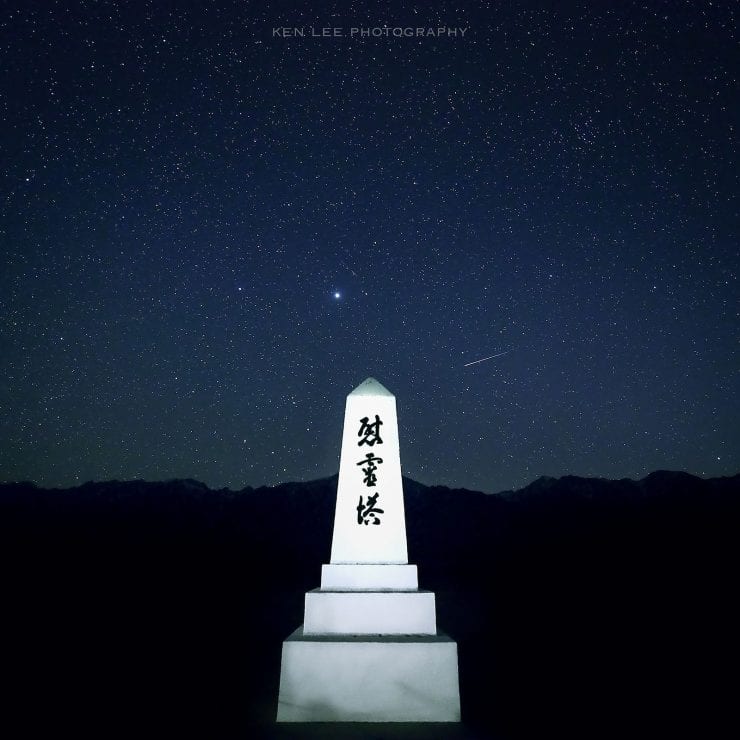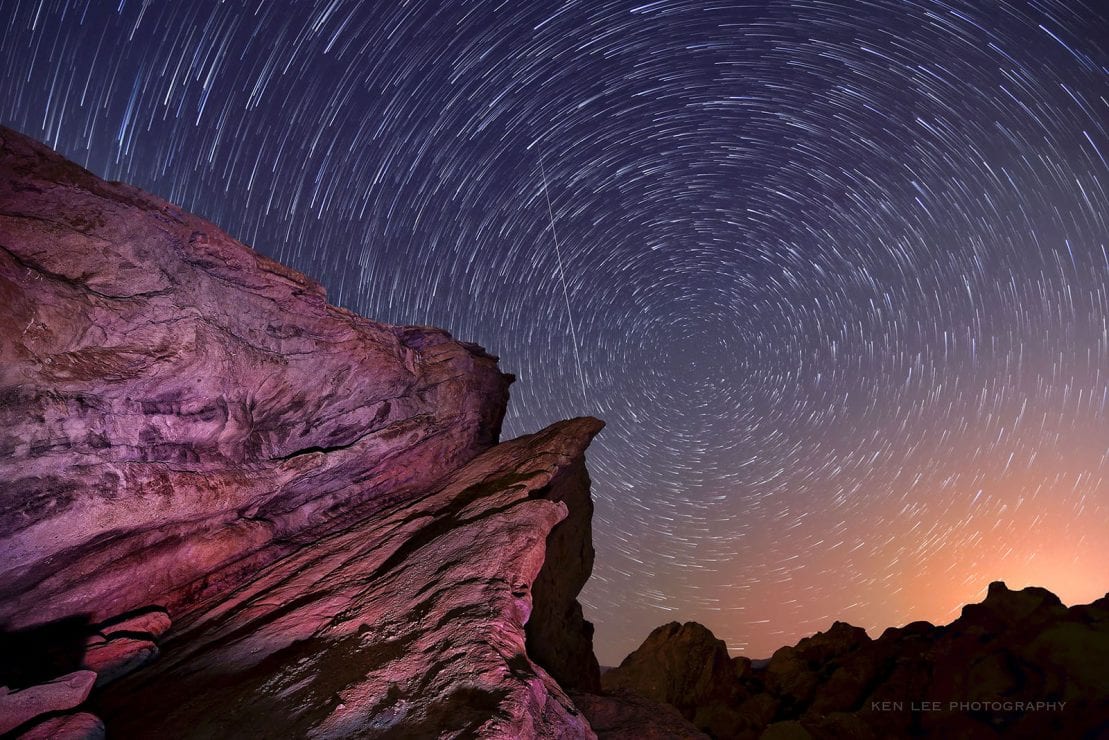The Perseid meteor shower is often the most spectacular meteor shower in the Northern Hemisphere due to frequency as well as its appearance in summer. Here’s how to photograph it!
There are typically about 100 visible meteors per hour on average. Of course, how many are visible depends on your weather and light conditions.
Find dark clear skies
Find the darkest skies you can, away from light pollution, preferably with large open spaces to view the night sky. Obviously, you also want to find a place with as few clouds as possible. Typically, they peak in early August. However, you can see plenty of meteors on other nights surrounding the peak. The most important thing is that you have dark, clear skies, preferably when the moon is not out. You can find out when the moon is out as well as other information about the photographing by using some of these apps.
When should you go?
Although the moon will set soon after it gets dark, between midnight and dawn should still have the most visible meteors. On August 12 and 13, when the meteor shower will likely peak, the moon will be dim and set quickly. However, the Perseids should be visible from July 17 through August 24, 2023.
What do you need to photograph the Perseid meteors?
There’s a few pieces of gear that make life great when photographing the meteor shower:
- A camera that has manual mode. This includes just about any DSLR or mirrorless camera. A wide-angle lens will capture more of the night sky, increasing your chances of capturing the streaking meteors.
- A tripod for keeping your camera still.
- Other helpful gear can include a shutter release cable.
- Gaffer’s tape (I like orange colored tape so I can see it at night)
- Headlamp (try to use this as little as possible to preserve your night vision; use a red headlamp if possible)
- Lawn chair, especially one that reclines so you can watch the universe’s glorious light show.
- Favorite beverage
- Snacks
- Friends
Where do you aim the camera?
I could be snarky and say “the sky,” but no, you want more information than that! The Perseids meteor shower is named after the constellation of Perseus because that’s the location in the sky where the meteors appear to originate. This is sometimes referred to as the radiant point. Perseus will appear more or less north and drift northeast if you are in the Northern Hemisphere, where this will be most visible.
However, I should mention that the meteors will be visible in many places in the night sky. You are not restricted to pointing your camera north or northeast. Think about composition as well. Maybe there is an interesting foreground nearby that adds interest to your photo, or perhaps point it to the south or southeast so you can also capture the Milky Way.
Take many successive shots
You can’t wait for a meteor to streak across the sky and then try to trigger your camera. It would already be too late!
The secret is to keep your camera continuously clicking, then lean back and enjoy the meteor shower.
The other secret? Turn off Long Exposure Noise Reduction (LENR) on your camera. Why? Because it will pause for the length of the exposure to apply noise reduction, and we don’t really want that here. We want the camera to continuously photograph.
We will discuss two ways your camera can continually take photos.
1. Wired remote shutter release
Use a cheap remote shutter release. You can get one that attaches to your camera via a cable. Once you have this, set your camera to Continuous Burst mode. This is the same mode that allows you to shoot rapid-fire sequences like what sports photographers do. We night photographers can use these too, but in slow motion.
Simply set your camera to your ideal settings, such as a 20-30 second exposure, f/2.8 and ISO of 1600-6400, depending on how bright the scene is (or how wide your aperture is). Lock down your remote shutter release. This should keep your camera clicking merrily away, taking one photo after another. Many cameras have a limit of 100 consecutive photos, so be aware of that and set a timer if you wish. Then simply start it up again.
2. Intervalometer
Your camera may have a built-in intervalometer already. Or you can purchase an external intervalometer and attach it to your camera. There are myriad options including Bluetooth camera controllers as well. You can set the time of exposure, time between each photo (which should be as short as possible, typically one second), and how many individual photos you wish to photograph. If you want to learn more about setting your intervalometer, please read this handy article that walks you through it!
Camera settings
Set your lens to infinity. If you are not sure how to focus for infinity and the stars in the sky, this article on finding infinity may help you! Assuming you are using a wide-angle lens and the moon is not out, try a shutter speed of around 20-30 seconds. Choose a large aperture, something like f/2.4 or f/2.8. And then adjust the ISO to something relatively high, such as ISO 1600 or 3200, whatever works for getting a decent exposure and lots of stars.
Take a test shot. Can you see the night sky, the stars, and everything else? Is everything exposed reasonably well? If you cannot, adjust something in your exposure triangle, such as the shutter speed or the ISO.
Remember this, though. If you adjust it much past 30 seconds on an ultra wide angle lens, the stars will begin appearing elongated rather than pinpoints. And if you adjust the ISO for a very high setting, it will become noisier and have less dynamic range.
Keep people away from your tripod. Don’t shine lights around the area. Relax and watch the heavenly show.
What do I do with all these photos?
You’ll have possibly hundreds of photos of the night sky. Hopefully some have meteors! If so, congratulations! Cherry-pick those and show them off to your friends and family.
But there’s another bonus. Whether you have meteors or not, you may also take all these successive photos and make an image of long star trails that may or may not feature shooting stars! If you are interested in this, read more about photographing the time-lapses in the field and creating a time-lapse video in less than three minutes.
Going out to photograph the meteor shower this month? Don’t forget to submit your favorite images to the Photofocus Community!
VISIT ME, VISIT ME!
BOOKS AND PRINTS:
Head on over to the Ken Lee Photography website to purchase books or look at night photography and long exposure prints and more. My books are available there and Amazon, Barnes and Noble, Target, Booktopia, Books A Million, IBS, and Aladin. If you enjoy the book, please leave a nice review, thanks!
NIGHTAXIANS VIDEO YOUTUBE PODCAST:
Night photographers Tim Little, Mike Cooper and I all use Pentax gear. We discuss this, gear, adventures, light painting, lenses, night photography, creativity, and more in this ongoing YouTube podcast. Subscribe and watch to the Nightaxians today!
SOCIAL MEDIA:
Ken Lee Photography Facebook Page (poke your head in, say hi, and “like” the page if you would, uh, like)
Instagram
PODCAST:
Behind the Shot video podcast – interview February 2020
VIDEO PRESENTATION:
How We Got the Shots: Five Photographers, Five Stories – Night Photo Summit 2022
VIDEO INTERVIEW:
Ken Lee’s Abandoned Trains Planes and Automobiles with Tim Little of Cape Nights Photography
Conversation about night photography and my book with Lance Keimig of National Park At Night
ARTICLES:
A Photographer Captures Haunting Nighttime Images of Abandoned Buildings, Planes, and Cars in the American Southwest – Business Insider by Erin McDowell
A Photographer Explores Southern California’s Desert Ruins – Los Angeles Magazine article by Chris Nichols







